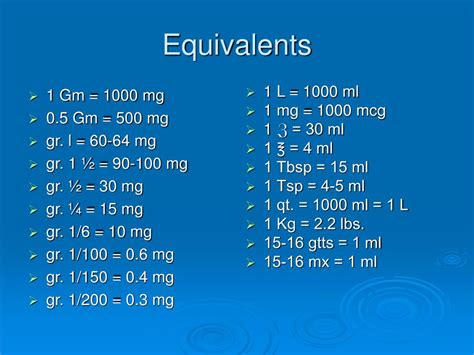Preparing for the AP Biology exam can be a daunting task, but with a solid understanding of the key concepts and units, you can feel confident and prepared on test day. The AP Biology curriculum is divided into eight units, each covering a specific aspect of biology. In this article, we'll provide an in-depth review of each unit, highlighting the most important topics, key terms, and concepts to focus on. Whether you're a seasoned AP Biology student or just starting to prepare, this guide will help you master the material and ace your exam.
As a student of AP Biology, it's essential to have a strong foundation in the subject matter. The exam is designed to test your knowledge and understanding of the course material, as well as your ability to apply that knowledge to real-world scenarios. With a clear understanding of the units and key concepts, you'll be well-equipped to tackle the exam and achieve your goals.
Unit 1: Chemistry of Life
The first unit of AP Biology covers the chemistry of life, including the structure and function of biological molecules, such as carbohydrates, proteins, and nucleic acids. This unit is crucial in understanding the building blocks of life and how they interact with each other. Key topics to focus on include:
- The structure and function of cells, including the role of organelles and membranes
- The properties of water and its importance in biological systems
- The types and functions of biological molecules, including carbohydrates, proteins, and nucleic acids
For example, did you know that carbohydrates are the primary source of energy for cells? They come in various forms, including sugars, starches, and fibers. Understanding the different types of carbohydrates and their functions is essential in grasping the chemistry of life.
Biological Molecules
Biological molecules are the building blocks of life, and understanding their structure and function is vital in AP Biology. The four main types of biological molecules are:
| Molecule | Function |
|---|---|
| Carbohydrates | Primary source of energy for cells |
| Proteins | Structural and functional molecules, such as enzymes and hormones |
| Nucleic Acids | Contain genetic information, including DNA and RNA |
| Lipids | Energy storage and cell membrane structure |
Unit 2: Cell Biology
The second unit of AP Biology covers cell biology, including the structure and function of cells, cellular respiration, and photosynthesis. This unit is critical in understanding how cells function and interact with their environment. Key topics to focus on include:
- The structure and function of cell membranes, including transport and communication
- The process of cellular respiration, including glycolysis, the citric acid cycle, and oxidative phosphorylation
- The process of photosynthesis, including light-dependent and light-independent reactions
For instance, cellular respiration is the process by which cells generate energy from glucose. It's a critical function that occurs in the mitochondria and involves the breakdown of glucose to produce ATP. Understanding the different stages of cellular respiration, including glycolysis and the citric acid cycle, is vital in grasping cell biology.
Cellular Respiration
Cellular respiration is the process by which cells generate energy from glucose. The three stages of cellular respiration are:
| Stage | Process |
|---|---|
| Glycolysis | Breakdown of glucose to produce pyruvate |
| Citric Acid Cycle | Breakdown of pyruvate to produce ATP and NADH |
| Oxidative Phosphorylation | Production of ATP from NADH and FADH2 |
Key Points
- The structure and function of biological molecules, including carbohydrates, proteins, and nucleic acids
- The process of cellular respiration, including glycolysis, the citric acid cycle, and oxidative phosphorylation
- The process of photosynthesis, including light-dependent and light-independent reactions
- The importance of cell membranes and transport in cellular function
- The role of enzymes and hormones in cellular regulation
Unit 3: Genetics
The third unit of AP Biology covers genetics, including Mendelian genetics, DNA structure and replication, and gene expression. This unit is essential in understanding how genetic information is passed from one generation to the next. Key topics to focus on include:
- The laws of Mendelian genetics, including the law of segregation and the law of independent assortment
- The structure and replication of DNA, including the role of helicase, polymerase, and ligase
- The process of gene expression, including transcription and translation
For example, the law of segregation states that each pair of alleles separates from each other during gamete formation. This fundamental concept in genetics is crucial in understanding how traits are inherited.
DNA Structure and Replication
DNA is the genetic material that contains the instructions for the development and function of all living organisms. The structure of DNA includes:
| Component | Function |
|---|---|
| Sugar | Deoxyribose |
| Base | Adenine, Guanine, Cytosine, and Thymine |
| Phosphate Group | Linkage between nucleotides |
What is the primary focus of AP Biology?
+The primary focus of AP Biology is to provide students with a comprehensive understanding of the principles of biology, including the structure and function of cells, genetics, evolution, and ecology.
What are the eight units of AP Biology?
+The eight units of AP Biology are: Chemistry of Life, Cell Biology, Genetics, Evolution, Ecology, Plant Biology, Animal Biology, and Human Physiology.
How can I prepare for the AP Biology exam?
+To prepare for the AP Biology exam, it’s essential to have a solid understanding of the key concepts and units. This can be achieved by reviewing the course material, practicing with sample questions and exams, and seeking guidance from a qualified teacher or tutor.


